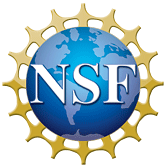Learning Modules
Learning Modules
CSDMS is building a suite of new multi-chapter learning modules designed for new to intermediate learners. These extended exercises allow users to build their expertise in surface dynamics modeling via compelling research questions and topics. Modules are self-paced with embedded prompts and programming challenges to help learners assess their own progress. To access these modules, you first need access to the EarthscapeHub, which is open to all after authentication (see instructions here). As modules come online, brief descriptions can be found here as well links to github repos. Those repos can be launched directly on the EarthscapeHub onces you have been authenticated.
Learning Module 1: Simulating the impacts of extreme rainfall using Landlab
Chapter 0: Overview
This module is motivated by understanding drivers of land surface change and hazard during the the 2013 Colorado floods and landslides. The overview chapter sets the stage for an extended analysis of how stochastic rainfall impacts the surface. Students are introduced to Landlab, a Python-based modeling library, that is well-suited to building custom-built numerical models of surface dynamics.
Chapter 1: When it rains, it pours (sometimes)
Chapter 1 focuses on describing and simulating rainstorm statistics both from data and via parametric models. Student learning outcomes include:
- Analyzing time series data from a tipping bucket rain gauge.
- Describing and comparing event-scale storm properties.
- Simulating stochastic rainfall using a Landlab component.
- Explaining how well historic events are captured by rainfall generators.
Chapter 2: From rainfall to runoff
Chapter 2 focuses on using Landlab grids to add process components. Student learning outcomes include:
- Constructing and interpreting a 'bucket' model of surface water hydrology.
- Explaining how root zone soil moisture evolves through time.
- Planning and executing a model that couples two Landlab components.
- Critiquing a hydrological model and modifying it to route water.
Chapter 3: Flow, floods, and failures
Chapter 3 focuses on using models based on real-world topographic data. Student learning outcomes include:
- Building a model grid using real-world topography.
- Interpreting fluxes by delineating watersheds.
- Constructing an overland flow model driven by rainfall runoff.
- Analyzing how the probability of hillside failure varies in space and time.
